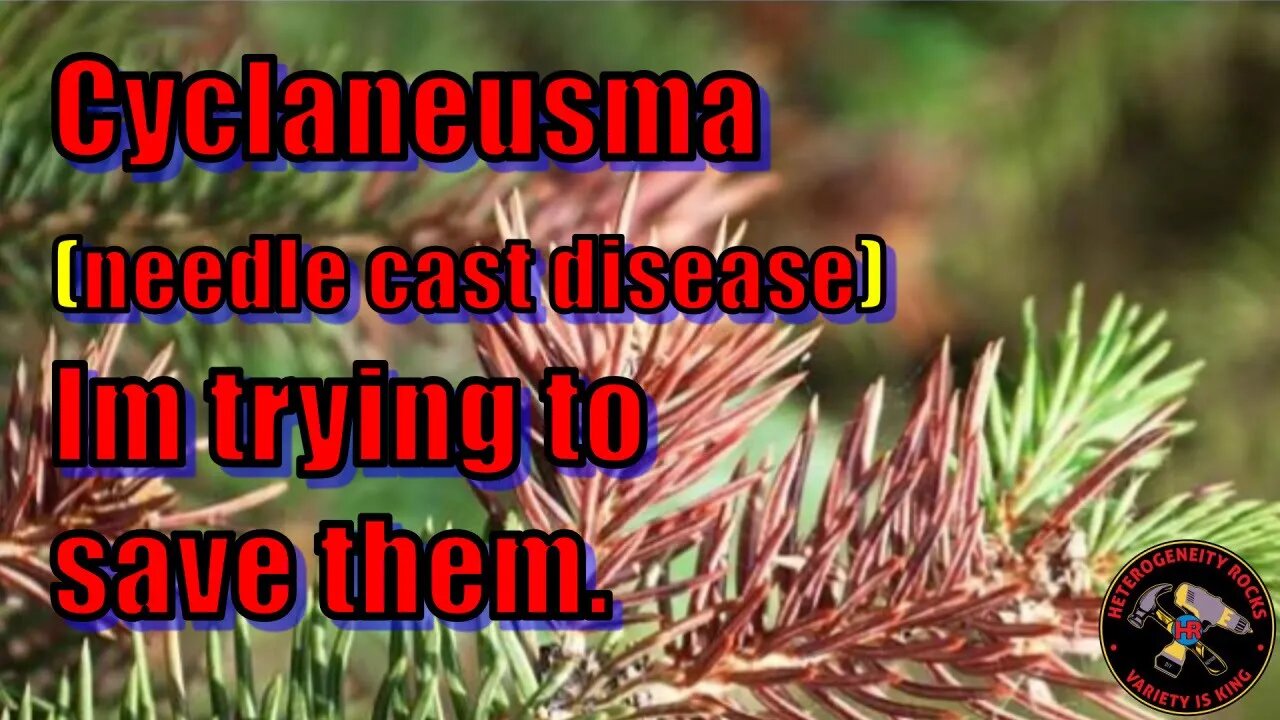Premium Only Content

Cyclaneusma needle cast disease | I'm trying to save my trees. #forest #disease
Cyclaneusma needle cast disease is very destructive too trees.In this video, we will be discussing Cyclaneusma needle cast disease, a fungal disease that affects conifers such as pine, spruce, and Douglas fir. This disease can cause significant damage to these trees, leading to defoliation and even death if left untreated.
We will start by discussing the symptoms of Cyclaneusma needle cast disease, which include yellowing and browning of needles, followed by their premature dropping. We will also talk about how this disease spreads and what conditions promote its growth.
Next, we will delve into the biology of the fungus responsible for Cyclaneusma needle cast disease, including its life cycle and how it infects trees. We will also discuss the different management options available to control this disease, including cultural practices, fungicide applications, and tree removal in severe cases.
Throughout the video, we will provide visual aids such as photos and diagrams to help viewers understand the disease and its effects on conifers. We will also provide tips on how to prevent and manage Cyclaneusma needle cast disease, as well as resources for further reading.
Whether you're a homeowner, landscaper, or forestry professional, this video will provide valuable information on how to identify, prevent, and manage Cyclaneusma needle cast disease in your trees.
This disease is the most common and most destructive needle cast in fir. It severely defoliates seedlings and young trees, reduces their growth, and may sometimes kill them. In larger trees, however, the damage does not cause any serious problems. The current year's needles are infected first, but they do not show any damage. The following spring, brown spots appear and spread, eventually covering the entire surface of the needles by mid-summer. The first fruiting bodies form on the upper surface of the needles and discharge spores in late summer or early fall. It is unclear just what role these spores play, but they may give rise to the second type of spores. Ascospores form in mid-summer on the needles infected two years earlier. Hysterothecia, the fruiting bodies bearing these spores, create a black line on the underside of the needles. This line is actually the ascus, which will release ascospores able to infect new shoots the following spring. Taken from
-
 11:47
11:47
XDDX_HiTower
14 hours agoGZW LEVELS UP HARD WITH A PERFORMANCE AND GOL BULLSEYE
9142 -
 31:59
31:59
Stephen Gardner
7 hours ago🔥TOP Dems CAUGHT in Epstein Payoff Scandal + Trump $2000 Check UPDATE!
6K41 -
 2:25:05
2:25:05
The Pascal Show
1 day ago $2.21 earned'THERE'S NOTHING TO HIDE?!' Trump SUDDENLY Urges House Republicans To Vote Release Epstein Files
435 -
 1:45:20
1:45:20
The Michelle Moore Show
18 hours ago'A Jaw-dropping Prophetic Word From the UFC Brawl On Saturday Night' Guest, Lt. Mark Taylor: The Michelle Moore Show (Nov 17, 2025)
14K37 -
 LIVE
LIVE
Lofi Girl
3 years agolofi hip hop radio 📚 - beats to relax/study to
209 watching -
 2:08:23
2:08:23
FreshandFit
12 hours agoDeVory Darkins Realizes Women Aren't Even TRYING To Get Married
192K59 -
 5:40:05
5:40:05
Drew Hernandez
1 day agoTRUMP DOES DAMAGE CONTROL AFTER MTG FALLOUT & DEFENDS TUCKER CARLSON!
25.2K13 -
 27:05
27:05
Robbi On The Record
8 days ago $21.53 earnedThe Secret to Aging Strong: What Your Body’s Been Trying to Tell You
65.8K5 -
 1:53:43
1:53:43
Badlands Media
13 hours agoBaseless Conspiracies Ep. 159: Hunting Season for the Elite
85.1K22 -
 2:05:40
2:05:40
Inverted World Live
8 hours agoThe Technocratic Web of Control w/ 7SEES | Ep. 142
72.6K14